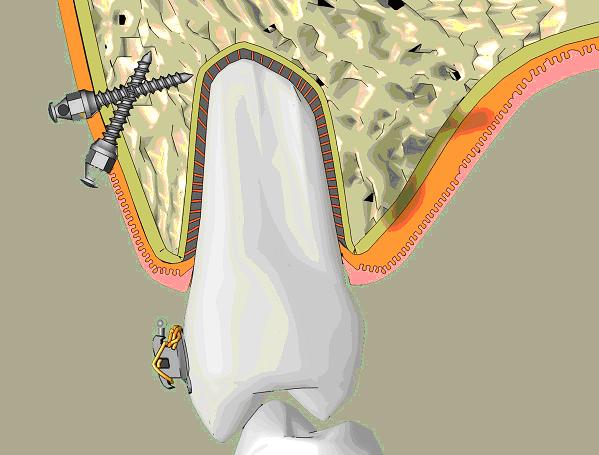Microimplant screws for Anchorage in Orthodontics:Dawn of a New Era-Part VI
Selection of microimplants a. Length ConsiderationsThe length of screw portion is ranging from 6mm to 12 mm. Longer microimplants lead to better mechanical stability like dental prosthetic implants, but more possibilities of invading adjacent anatomical structures, such as roots, maxillary sinus and nerve etc. Always we should consider the depth of soft tissue when choosing proper length of microimplantsd. Especially palatal mucosa may be very thick in many. So, if soft tissue is 6mm thick, in order to place 6mm of screw portion into the bone, at least 12mm length of microimplant should be chosen. This protocol requires that the soft tissue thickness as well as the bone quality must be evaluated at the location of placement.
Also, in choosing the proper length of a microimplant, the path of insertion of the microimplant must be considered. A microimplant can be placed either in a diagonal direction or a perpendicular direction relative to the cortical bone surface. It is better and easier to place microimplant in a perpendicular direction, but, there are many situations in which the microimplant should be placed in a diagonal direction so as to avoid injury to an adjacent tooth root. When the microimplant is placed in a diagonal direction rather than perpendicular direction, it is better to use a slightly longer microimplant (Fig).
 b. Diameter Considerations
b. Diameter ConsiderationsThere are various diameters, ranging from 1.2 mm to 2 mm, so they can be placed anywhere in the mouth. Depending on the inter-radicular distance, quality of bone and site of placement, we can choose different diameters of microimplants.
Thicker the microimplant, the greater becomes mechanical retention, but also the greater possibility for root contact. Thicker microimplants do not always guarantee higher success rate, even there is a report that microimplant of smaller diameter showed higher success rate than thicker ones (Kuroda et al,2007). Also thicker microimplants may be hard to remove due to osseointegration, in genral always choose smallest diameter as practical. When we place the microimplants between root, if we choose bigger ones, we can have more chance to touch the roots. If microimplant is touched to the root, the failure rate will be increased significantly (Kuroda et al, 2007). These are the commonly used length and diameter in most routine situations:- a. buccal & labial areas of maxilla : Cortical bone in these areas is not that thick, so use 1.2-1.3mm thick. Microimplants made by titanium alloys of this thickness can be inserted safely without pre-drilling on maxillary buccal areas. b. palatal areas of maxilla : Soft tissue is thick, so usually microimplants of longer than 10mm is needed, but the longer, the higher possibility of breakage, so use a little thicker ones ( 1.5-1.6 mm ) than buccal areas. The distance between roots is greater in palatal areas than buccal area, there is lower possibility of root contact even when using thicker microimplants. c. midpalatal suture : There is no worries for root contact, and also this is sutured area, so thicker ones are used. Microimplants of diameter larger than 1.7mm is recommended. Even 2 mm thick one can be used for younger cases. d. buccal & labial areas of mandible : Cortical bone of mandible is harder than maxilla, so, a little thicker ones (1.5-1.6mm) are better to prevent breakage especially for self-drilling (drill-free) method. Read the other sections on Microimplants:
Next section: Risk and Failure of Microimplants Tweet